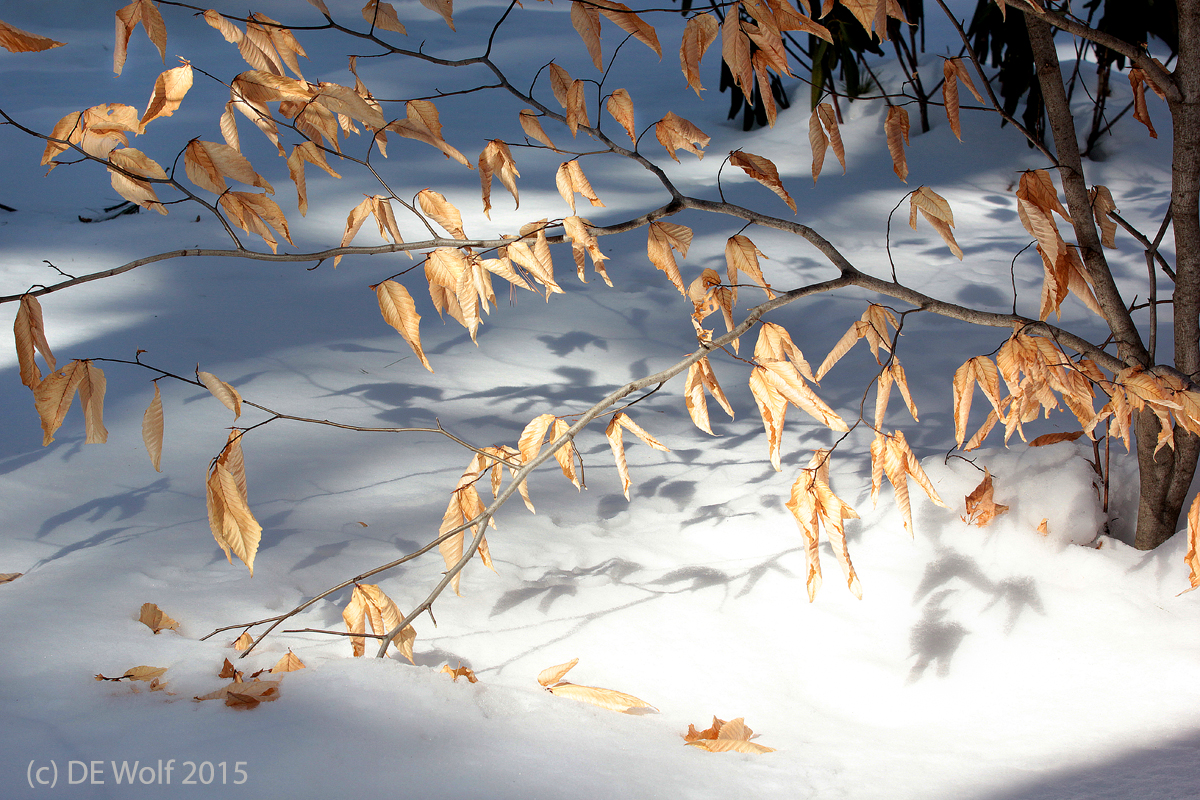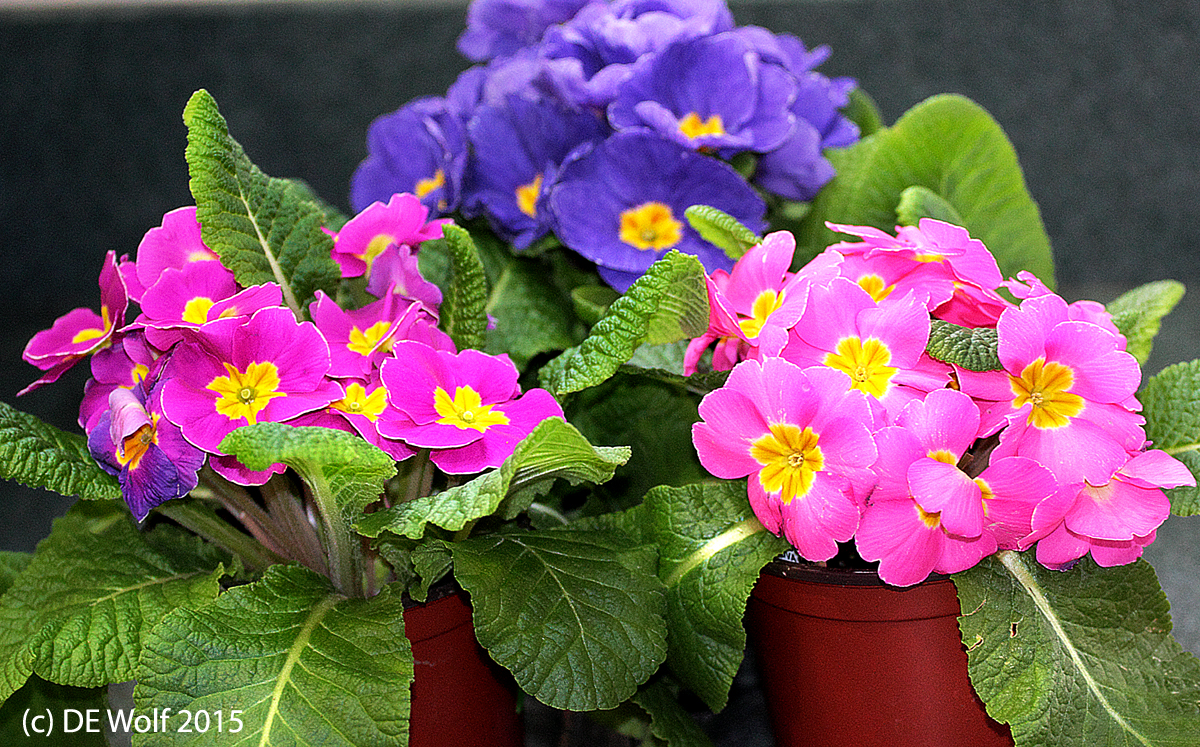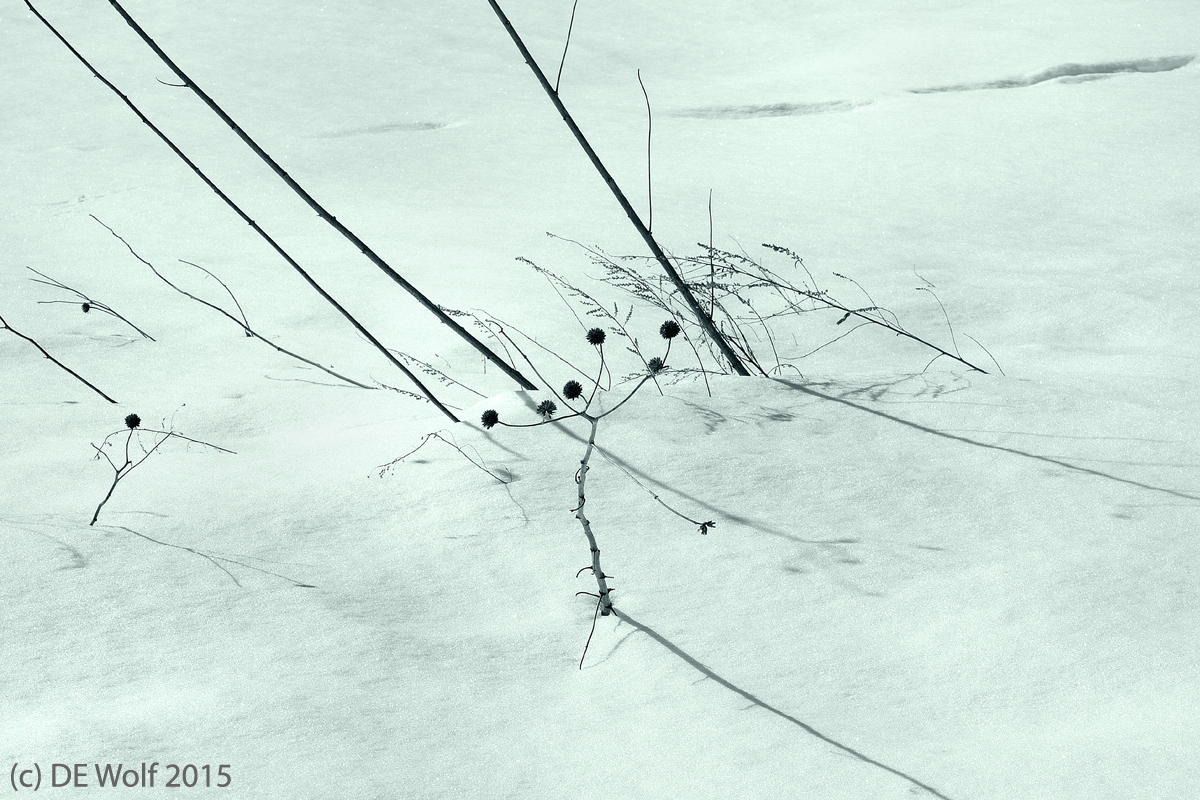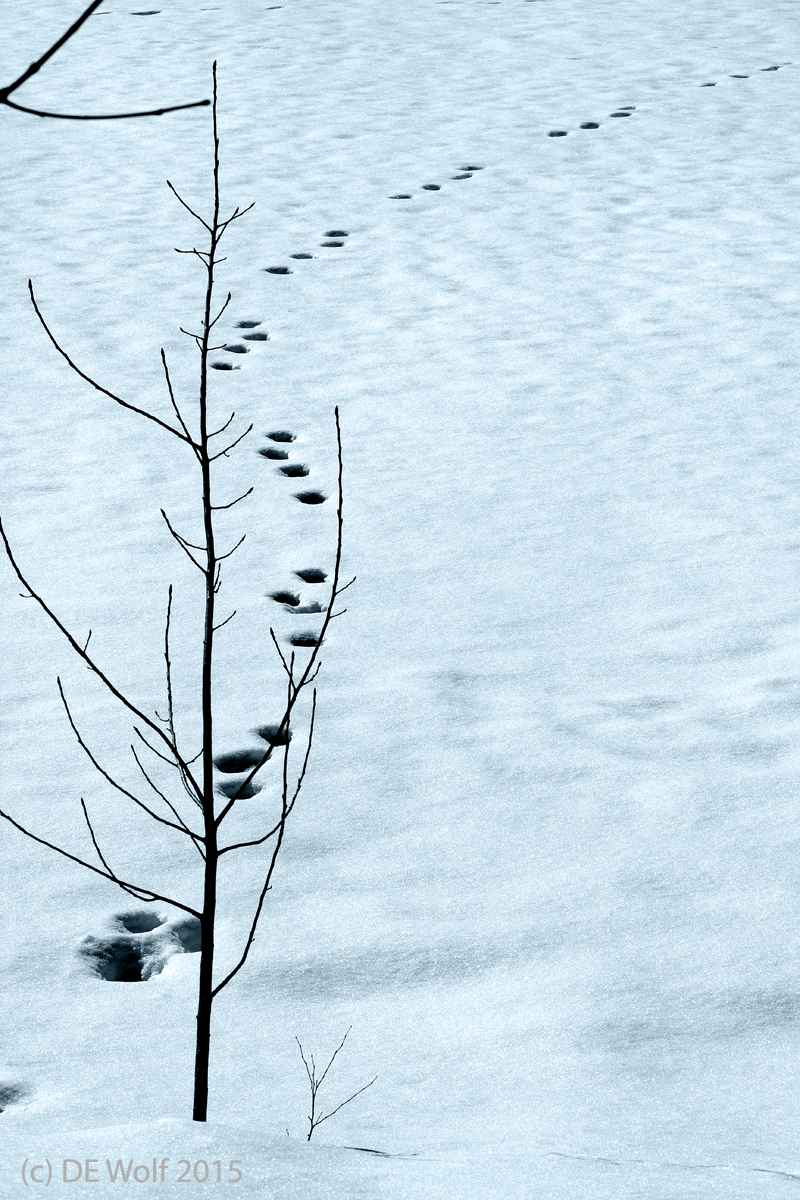Figure 1 – “Winter 2015 Leaves in the snow” is so far my favorite image of this grueling winter. There is nothing that I like better than coming upon a scene where a beam of light accentuates. In this case there is a sense of golden warmth contrasting with a cold blue-tinted winter snow. I tend to think of winter in black and white, but sometimes, this being an example, it demands color.
Significantly the view is very small. To me it is like a Japanese garden, a miniaturized idyllic garden. Japanese gardens have taught me to think of landscapes as fractal in nature. They function equally on all scales, from sweeping vistas to perhaps a single plant or stone and everything in between.. The day itself, was warm in a winter sense and sunny; so I was actively in search for shadows and highlights. And here you have the additional contrast of the leaves of autumn against the snows of winter.
One complication when I took the photograph was that there was a breeze causing the leaves to move. I cut back on the f-number and therefore depth of field so that I could decrease the exposure time. I waited for an auspicious moment of near quiet and shot at f/8.0 at 1/800th sec.
Canon T2i with EF70-200mm f/4L USM at 70 mm, ISO 400, Aperture-priority AE mode, 1/800th sec at f/8.0 with +1 exposure compensation.




